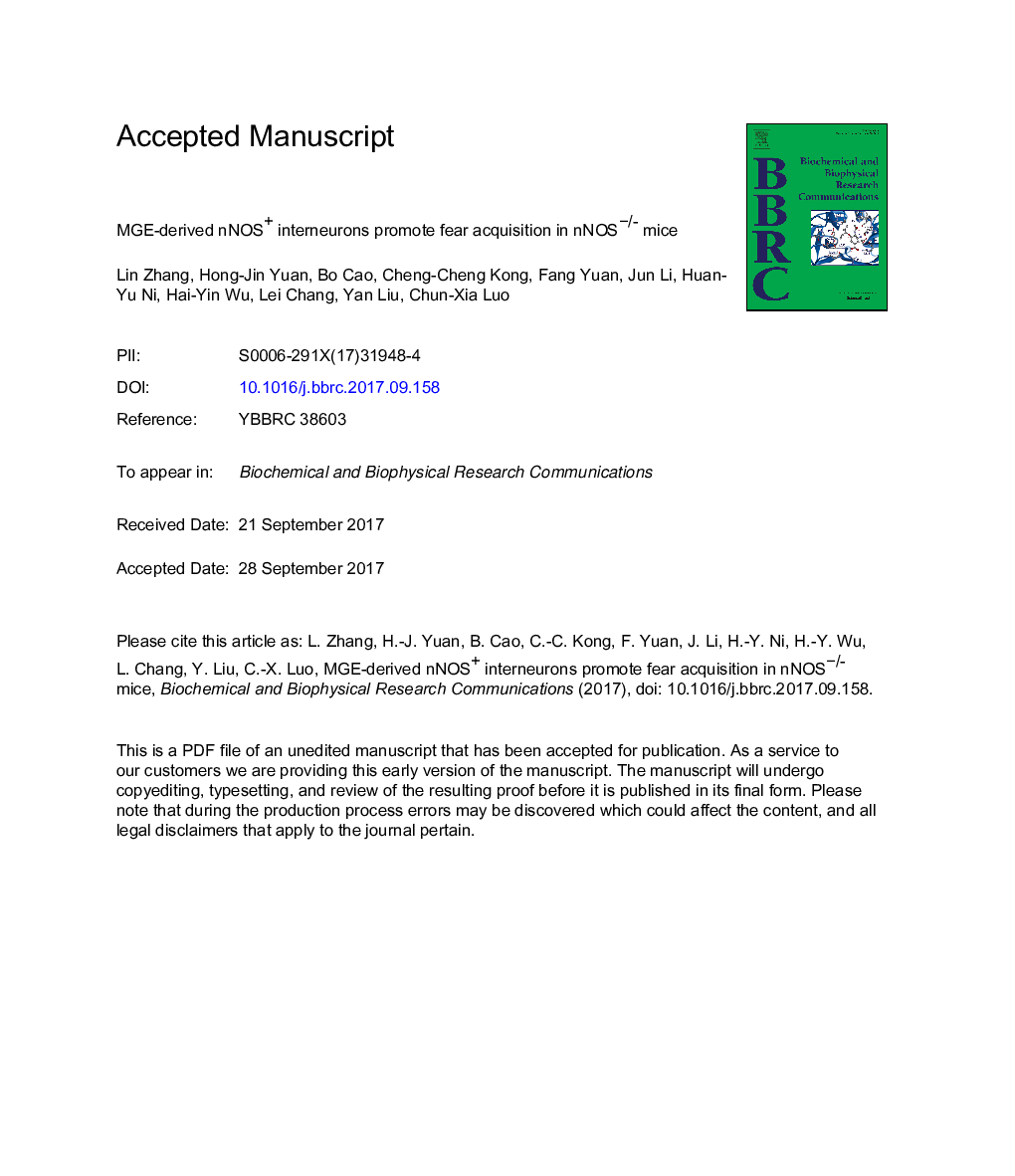| Article ID | Journal | Published Year | Pages | File Type |
|---|---|---|---|---|
| 5504559 | Biochemical and Biophysical Research Communications | 2017 | 25 Pages |
Abstract
Neuronal nitric oxide synthase (nNOS) 1, mainly responsible for NO release in central nervous system (CNS) 2, plays a significant role in multiple physiological functions. However, the function of nNOS+ interneurons in fear learning has not been much explored. Here we focused on the medial ganglionic eminences (MGE) 3-derived nNOS+ interneurons in fear learning. To determine the origin of nNOS+ interneurons, we cultured neurons in vitro from MGE, cortex, lateral ganglionic eminence (LGE) 4, caudal ganglionic eminences (CGE) 5 and preoptic area (POA) 6. The results showed that MGE contained the most abundant precursors of nNOS+ interneurons. Moreover, donor cells from E12.5 embryos demonstrated the highest positive rate of nNOS+ interneurons compared with other embryonic periods (E11.5, E12, E13, E13.5 and E14). Additionally, these cells from E12.5 embryos showed long axonal and abundant dendritic arbors after 10 days culture, indicating the capability to disperse and integrate in host neural circuits after transplantation. To investigate the role of MGE-derived nNOS+ interneurons in fear learning, donor MGE cells were transplanted into dentate gyrus (DG) 7 of nNOS knock-out (nNOSâ/â) or wild-type mice. Results showed that the transplantation of MGE cells promoted the acquisition of nNOSâ/â but not the wild-type mice, suggesting the importance of nNOS+ neurons in fear acquisition. Moreover, we transplanted MGE cells from nNOSâ/â mice or wild-type mice into DG of the nNOSâ/- mice and found that only MGE cells from wild-type mice but not the nNOSâ/â mice rescued the deficit in acquisition of the nNOSâ/â mice, further confirming the positive role of nNOS+ neurons in fear learning.
Keywords
Related Topics
Life Sciences
Biochemistry, Genetics and Molecular Biology
Biochemistry
Authors
Lin Zhang, Hong-Jin Yuan, Bo Cao, Cheng-Cheng Kong, Fang Yuan, Jun Li, Huan-Yu Ni, Hai-Yin Wu, Lei Chang, Yan Liu, Chun-Xia Luo,
